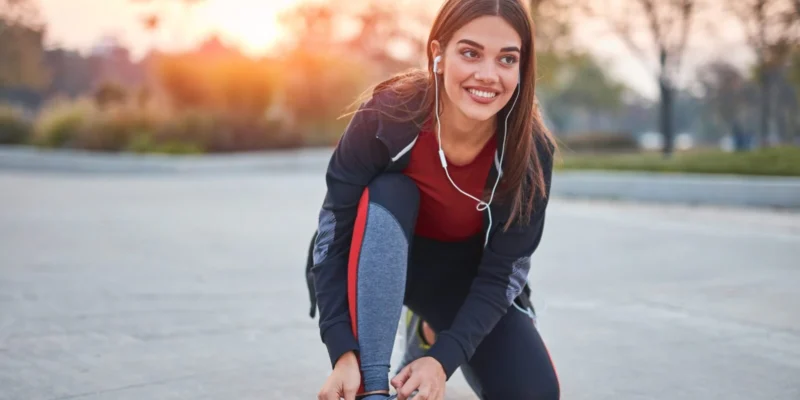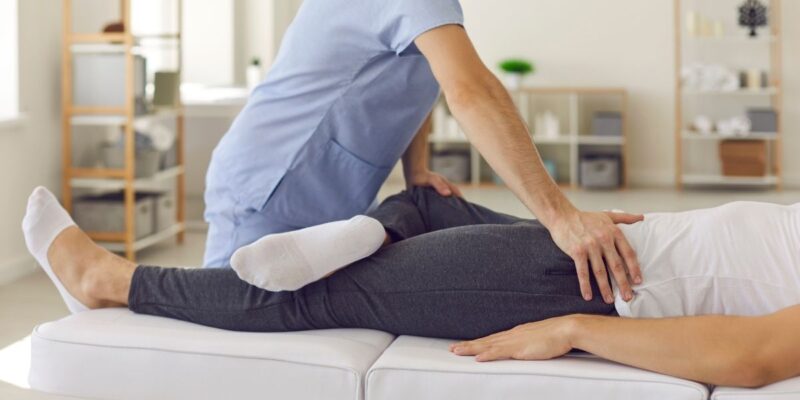Most people think about strength, flexibility, or heart health when it comes to exercise. Balance often gets left out. But balance is one of the most important skills for healthy aging.
Poor balance doesn’t just make you wobbly—it increases your risk of falls, fractures, and even loss of independence. According to the World Health Organization, falls are the second leading cause of accidental injury worldwide, and older adults are the most affected.
The good news is that balance is not something you either “have” or “lose.” Like muscle strength, balance can be trained and improved at any age. Physiotherapy offers safe, targeted ways to restore stability, rebuild confidence, and prevent falls before they happen.
What Is Balance, Really?
Balance is your body’s ability to stay upright and steady when standing, walking, or moving. It relies on three systems working together:
-
Vision – Your eyes help you judge distance, orientation, and hazards.
-
Vestibular system – The inner ear helps sense movement and head position.
-
Proprioception – Your muscles, joints, and nerves tell your brain where your body is in space.
When these systems work smoothly, you can walk confidently, climb stairs, or bend down without thinking. But when one system weakens—or when muscles lose strength—your body has to work harder to stay steady.
Why Balance Declines With Age
Balance problems are common with aging, but they are not inevitable. Several factors contribute to decline:
-
Muscle weakness – Especially in the legs, hips, and core.
-
Slower reflexes – The nervous system reacts more slowly to changes.
-
Joint stiffness – Arthritis or reduced mobility limits smooth movement.
-
Vision changes – Reduced depth perception or poor night vision.
-
Vestibular issues – Inner ear conditions like vertigo or Ménière’s disease.
-
Medication side effects – Some drugs cause dizziness or drowsiness.
Even lifestyle choices—like sitting too much, avoiding outdoor activity, or relying heavily on support—can gradually reduce balance.
Why Balance Training Matters
Balance training is about more than just “not falling.” It affects nearly every part of daily life:
-
Independence: Good balance lets you live without relying on others for simple tasks.
-
Confidence: When you feel steady, you’re more likely to stay active.
-
Injury prevention: Fewer falls mean fewer fractures and hospital stays.
-
Mobility: Balance supports smoother walking, turning, and climbing stairs.
-
Brain health: Balance exercises challenge coordination and can improve focus.
Without balance, even basic movements—like getting out of bed, carrying groceries, or stepping off a curb—become difficult and dangerous.
Signs Your Balance Needs Attention
You don’t have to wait until you fall to notice balance problems. Warning signs include:
-
Feeling unsteady when walking on uneven ground.
-
Avoiding stairs, busy environments, or outdoor walking because of fear of falling.
-
Reaching for furniture or walls for support.
-
Frequent tripping or stumbling.
-
A fall within the last 12 months.
Even if you don’t notice these signs, it’s worth checking your balance as part of routine health care—especially after 50.
How Physiotherapy Improves Balance
Physiotherapists use assessments to identify the exact cause of imbalance. Sometimes it’s weak muscles, sometimes joint stiffness, and sometimes a nervous system issue. By tailoring exercises to the root cause, physiotherapy helps restore stability more effectively than general exercise.
Common strategies include:
-
Strengthening exercises for legs, hips, and core.
-
Balance practice on different surfaces, so the body learns to adjust quickly.
-
Postural training, teaching you to align your body more efficiently.
-
Flexibility work to loosen stiff joints and muscles.
-
Fall prevention education, including safe ways to move at home.
Examples of Balance Exercises
Here are some simple but effective exercises a physiotherapist may prescribe:
-
Single-leg stance – Standing on one leg while holding onto a chair.
-
Heel-to-toe walk – Walking in a straight line, placing one foot directly in front of the other.
-
Sit-to-stand – Practicing standing up from a chair without using your hands.
-
Step-ups – Stepping on and off a low platform to strengthen legs and improve coordination.
-
Tandem stance on foam – Standing with feet close together on a soft surface to challenge stability.
These may look simple, but when performed consistently, they re-train muscles and nerves to respond faster to instability.
Real-Life Benefits of Balance Training
Balance training doesn’t just keep you from falling. It impacts quality of life in surprising ways:
-
Walking with ease: No more shuffling or fear of tripping.
-
Better posture: Stronger balance muscles keep your body upright.
-
Improved confidence: You’re more likely to enjoy social activities, travel, or outdoor walks.
-
Reduced pain: Proper balance reduces strain on the back, hips, and knees.
-
Enhanced coordination: This helps with sports, dancing, or even playing with grandkids.
Balance Training Isn’t Just for Older Adults
While older adults benefit most, balance training is valuable at any age. Athletes, people recovering from injuries, or anyone with poor posture can improve performance and prevent future problems by working on balance.
For example:
-
Runners with strong balance are less likely to twist an ankle.
-
Office workers can avoid back strain by improving posture and core stability.
-
People in rehabilitation recover faster when balance is included in treatment.
When to Seek Professional Help
If you’ve already experienced a fall, dizziness, or unexplained weakness, it’s important to see a professional. A physiotherapist can:
-
Rule out serious medical causes.
-
Create a safe, progressive plan tailored to your needs.
-
Teach strategies to reduce risk at home, like adjusting furniture or using aids if necessary.
Trying to fix balance alone can sometimes make problems worse. Professional guidance ensures progress without injury.
Recovery Rehab Physiotherapy’s Perspective
At Recovery Rehab Physiotherapy in Westmead, we work with many clients who thought falling was just “part of getting older.” But balance can be improved—sometimes dramatically—with the right training.
We start with a comprehensive balance assessment, then build a plan that includes:
-
Targeted strength training for weak areas.
-
Gentle balance challenges in a safe environment.
-
Manual therapy to release tight muscles or joints.
-
Education about safe movement in daily life.
Our goal is not just to prevent falls, but to help clients feel confident moving again. Whether it’s walking outdoors, playing with grandchildren, or simply carrying groceries without fear, balance training gives freedom back.
The Bottom Line
Balance problems are not just an inevitable part of aging. They are a sign your body needs attention. The earlier you start training, the better your results.
With physiotherapy, balance training is safe, effective, and tailored to your needs. And it can be life-changing—restoring not just stability, but independence, confidence, and quality of life.
👉 Book a balance assessment with Recovery Rehab Physiotherapy today and take your first steady step toward safer movement.








